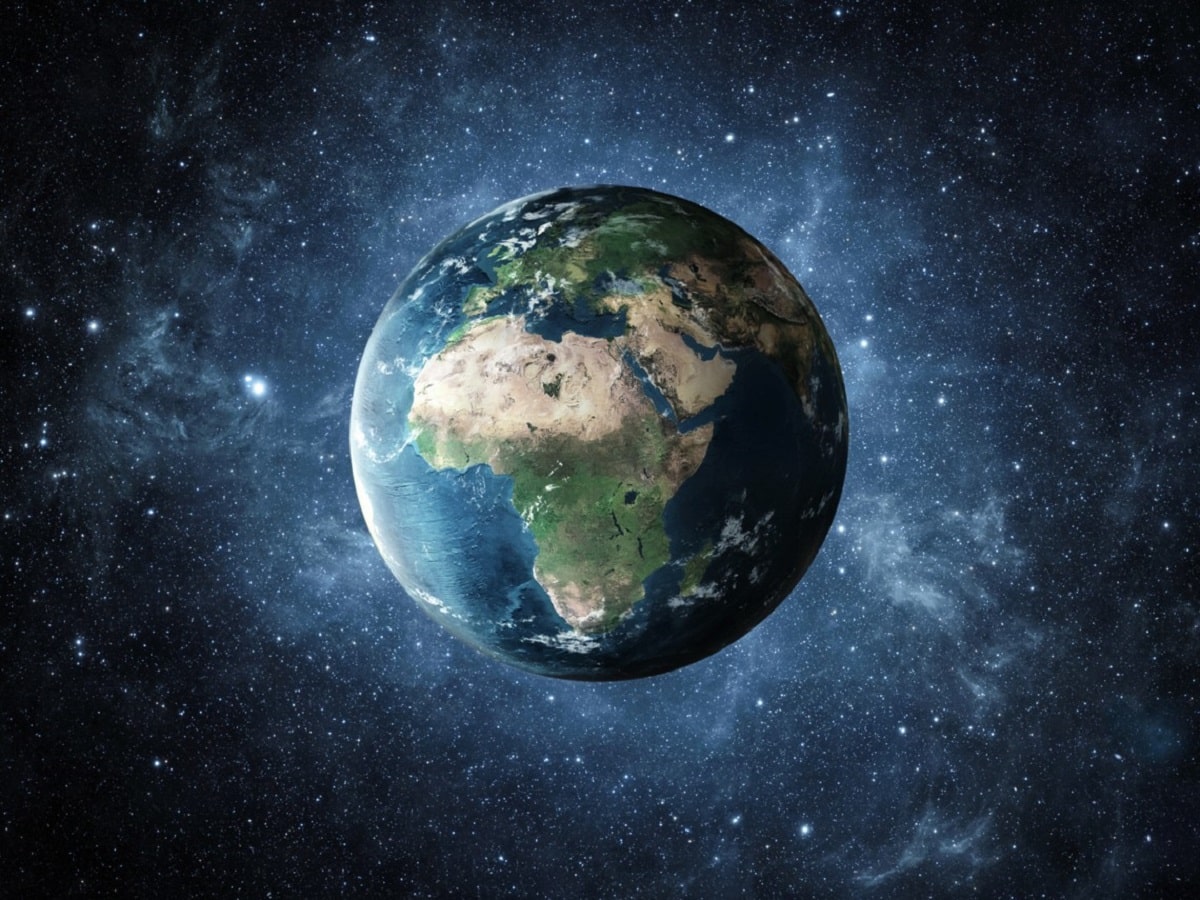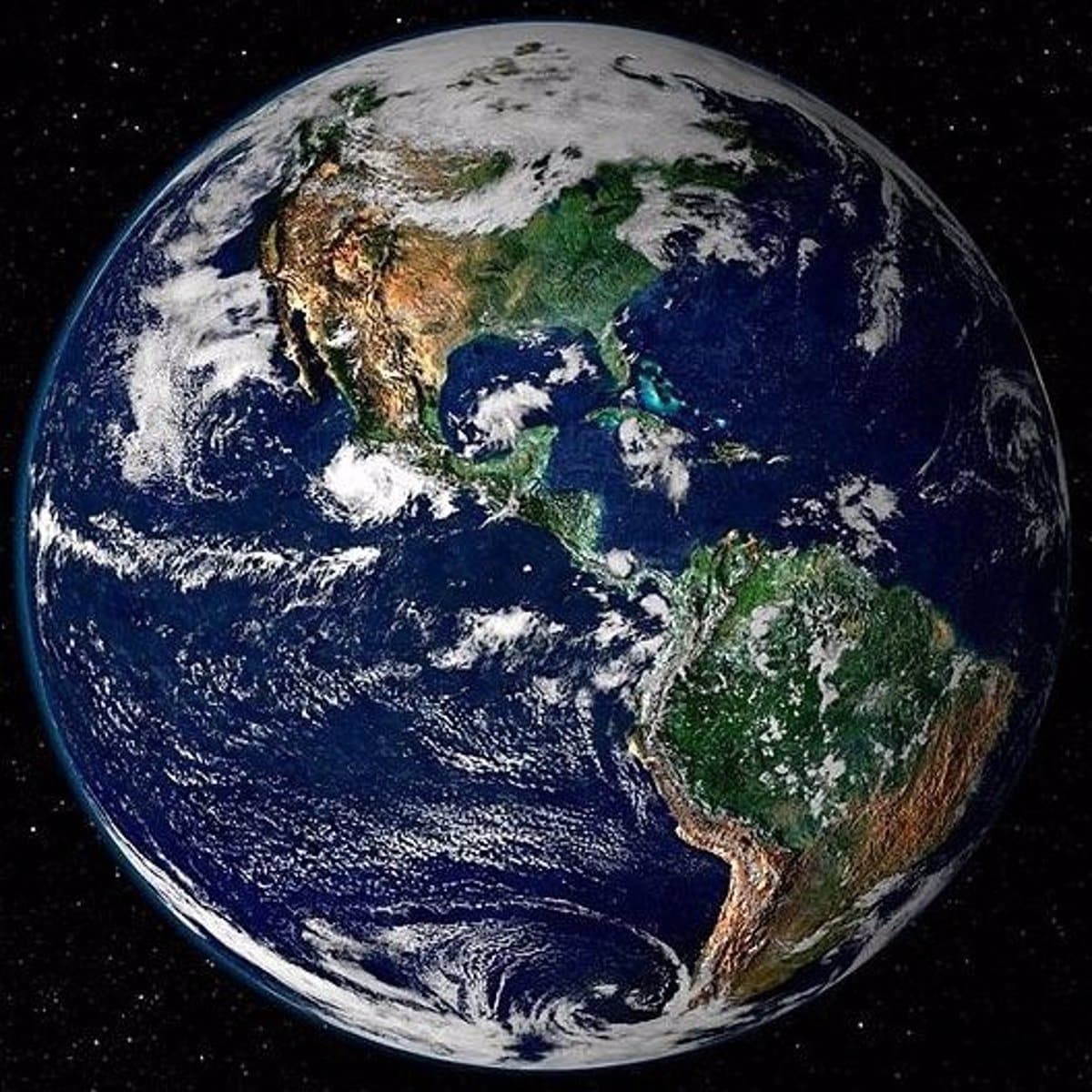
Our planet Earth has been studied and investigated by scientists throughout history. One of the most striking things about the planet is the earth mass. Since it is something that cannot be measured directly, different methods of indirect measurement are necessary.
For this reason, we are going to dedicate this article to telling you everything you need to know about the mass of the earth, how they have been able to calculate it and what characteristics it has.
Planet Earth and its characteristics

It is the third planet of the solar system, starting from the sun, between Venus and Mars. According to our current knowledge, it is the only one in the entire solar system that harbors life. Its name comes from the Latin Terra, a Roman god, the ancient Greek equivalent of Gaia, associated with fertility and fecundity. She is often called Tellus mater or Terra mater (Mother Earth) because all living things come from her womb.
Since ancient times, human beings have dreamed of discovering the limits of the earth and exploring all corners of the earth. Ancient cultures believed that it was infinite, or it could end up falling into the abyss. Even today, there are people who insist that the earth is flat, that it is hollow and other conspiracy theories.
However, Thanks to science and technology, we now have beautiful images of our planet. We also know how its inner layers are made up and what was there before humans appeared on its surface.
Origin and formation

The Earth formed about 4550 billion years ago. from the material that makes up the rest of the solar system, initially as a stellar cloud of gas and cosmic dust. The planet took 10 to 20 million years to form, with clouds of gas building up around it as its surface cooled and formed today's atmosphere.
Ultimately, through prolonged seismic activity, possibly due to the continuing influence of meteors, the Earth possesses the necessary elements and physical conditions necessary for the appearance of liquid water.
Thanks to this, the hydrological cycle can begin, helping the planet to cool faster to a level where life can begin. Over time, the abundance of liquid water on the surface causes our planet to appear blue when viewed from space.
Earth mass
Earth is the fifth largest planet in the solar system and the only one capable of supporting life. It is spherical with slightly flattened poles and a diameter of 12.756 km at equatorial altitude (6.378,1 km radius at the equator). Have a mass of 5,9736 x 1024 kg and a density of 5,515 g/cm3, the highest in the solar system. It also has a gravitational acceleration of 9,780327 m/s2.
Like other inner planets like Mars and Mercury, Earth is a rocky planet with a solid surface and a liquid metal core (due to the heat and pressure of its own gravity), unlike other gaseous planets like Venus or Jupiter. . Its surface is divided into gaseous atmosphere, liquid hydrosphere and solid geosphere.
How was the mass of the Earth calculated?
Obviously, this is not done by putting the planet in the balance. At least not on a real scale. The scale of the universe was used the Cavendish scale. That was the last name of the scientist who first accurately measured the mass of the Earth.
He did it in 1798, and 113 years later, the great Isaac Newton (1643-1727) formulated his Law of Universal Gravitation (LGU) in 1685. 189 years later, the great Galileo pointed his telescope at the sky. He did it in 1609. Surprisingly, Henry Cavendish (1731-1810) determined the mass of our planet without even leaving his house.
In fact, he barely made it out of the woods. East Cavendish he was a sullen, gloomy and quirky man, but great. In theory, it begins with Newton's LGU, which tells us that "any two bodies, considered point masses, are attracted to each other by a force that depends directly on their masses multiplied by a constant of unknown value, known today as the gravitational constant. . This constant is inversely proportional to the square of the Newtonian distance between them."
As a general rule, he used a setup designed in part by his friend John Michell. Brilliant clergyman and insightful geologist, he died before performing an experiment to determine the density of the Earth. From a geological point of view, this is the most interesting order of magnitude. It was then that Cavendish bought his equipment and installed it in one of his London homes.
Scales and constants

The device consists of two lead balls, 30 cm in diameter, suspended from a steel frame, and two small balls of 5 cm in diameter, suspended near the first ball and connected to each other by fine copper wires.
Essentially, torsion balances are designed to measure the twisting motion created in the wires by the gravitational pull on the pulleys that keep them afloat when the large balls move over the small balls.
The problem is that gravity is so small that any unforeseen factor could skew the results. That's why Cavendish runs it remotely. So that the proximity of the researchers would not interfere with the adjustment of the equipment, he used a telescope that he set up outside the room. He used it to read the precise scale, illuminated by a narrow beam of light emanating from outside the room.
We are talking about a sensitivity of the order of 0,025cm, which is not bad at all. A very subtle experiment. As expected, the small ball began to spin, attracted by the larger ball. After some calculations, Cavendish managed to find out the value of the gravitational constant from their masses and oscillations. This is the first step, followed by determining the average density of the Earth and then determining the mass of the Earth, to calculate the gravitational constant G.
Thanks to the determination of G, it was possible to calculate the mass of the Earth. Knowing its diameter, the force of Earth's attraction, and the closest G-value, Cavendish made these numbers. The results are spectacular.
I hope that with this information you can learn more about the mass of the Earth and its characteristics.
Topics related to the Universe and especially to our beautiful Blue Planet fascinate me, since they give me encouragement in my life. Greetings